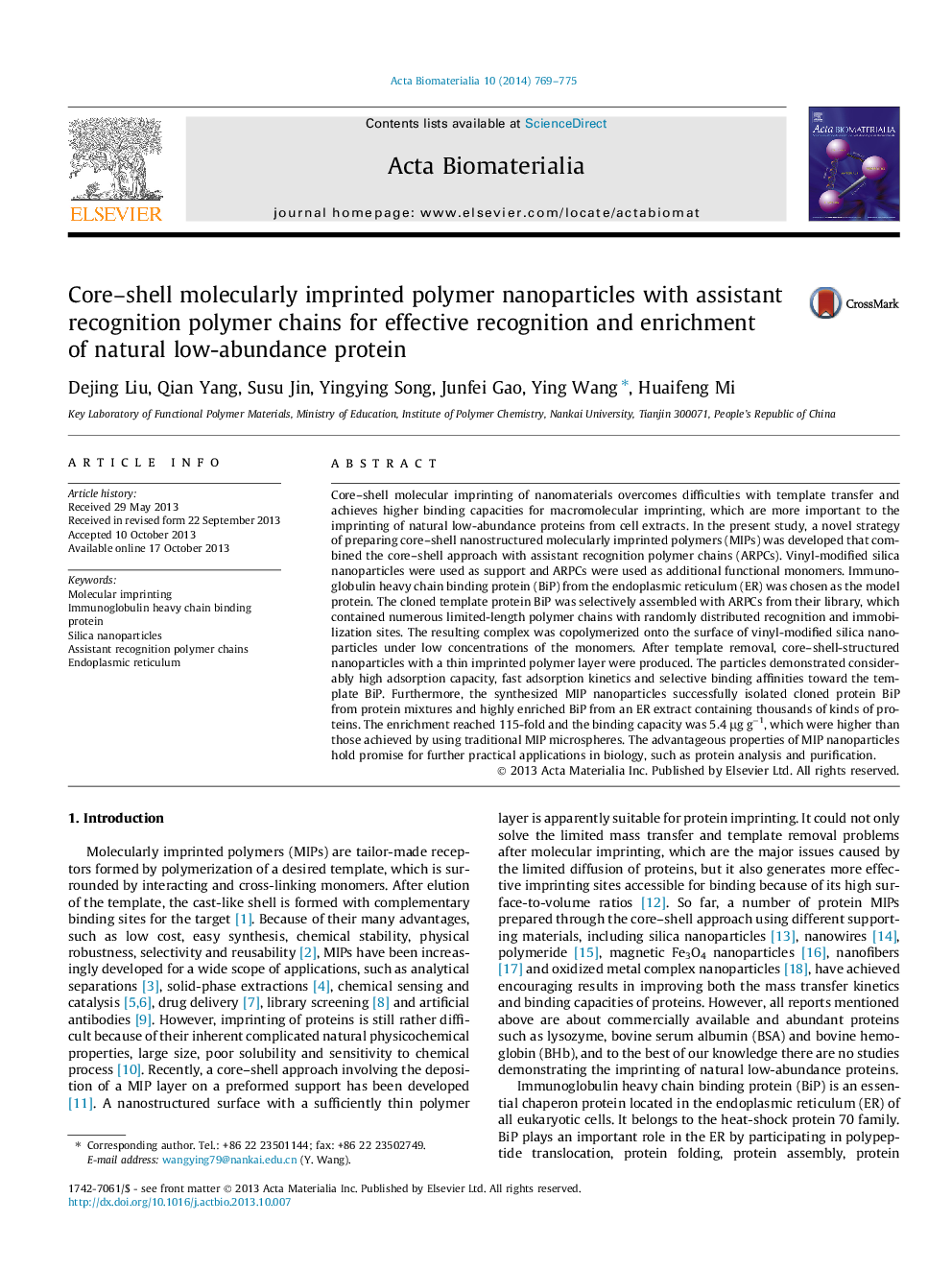| کد مقاله | کد نشریه | سال انتشار | مقاله انگلیسی | نسخه تمام متن |
|---|---|---|---|---|
| 10159339 | 47 | 2014 | 7 صفحه PDF | دانلود رایگان |
عنوان انگلیسی مقاله ISI
Core-shell molecularly imprinted polymer nanoparticles with assistant recognition polymer chains for effective recognition and enrichment of natural low-abundance protein
ترجمه فارسی عنوان
نانوذرات پلیمری مولکولی را با سلولهای مغناطیسی مجهز به زنجیره ای پلیمر به رسمیت شناختن و غنی سازی پروتئین کم فراوانی طبیعی
دانلود مقاله + سفارش ترجمه
دانلود مقاله ISI انگلیسی
رایگان برای ایرانیان
کلمات کلیدی
واردات مولکولی، پروتئین اتصال زنجیره سنگین ایمونوگلوبولین، نانوذرات سیلیکا، زنجیره پلیمر به رسمیت شناختن دستیار، اندوپلاسمی رتیکولوم،
موضوعات مرتبط
مهندسی و علوم پایه
مهندسی شیمی
بیو مهندسی (مهندسی زیستی)
چکیده انگلیسی
Core-shell molecular imprinting of nanomaterials overcomes difficulties with template transfer and achieves higher binding capacities for macromolecular imprinting, which are more important to the imprinting of natural low-abundance proteins from cell extracts. In the present study, a novel strategy of preparing core-shell nanostructured molecularly imprinted polymers (MIPs) was developed that combined the core-shell approach with assistant recognition polymer chains (ARPCs). Vinyl-modified silica nanoparticles were used as support and ARPCs were used as additional functional monomers. Immunoglobulin heavy chain binding protein (BiP) from the endoplasmic reticulum (ER) was chosen as the model protein. The cloned template protein BiP was selectively assembled with ARPCs from their library, which contained numerous limited-length polymer chains with randomly distributed recognition and immobilization sites. The resulting complex was copolymerized onto the surface of vinyl-modified silica nanoparticles under low concentrations of the monomers. After template removal, core-shell-structured nanoparticles with a thin imprinted polymer layer were produced. The particles demonstrated considerably high adsorption capacity, fast adsorption kinetics and selective binding affinities toward the template BiP. Furthermore, the synthesized MIP nanoparticles successfully isolated cloned protein BiP from protein mixtures and highly enriched BiP from an ER extract containing thousands of kinds of proteins. The enrichment reached 115-fold and the binding capacity was 5.4 μg gâ1, which were higher than those achieved by using traditional MIP microspheres. The advantageous properties of MIP nanoparticles hold promise for further practical applications in biology, such as protein analysis and purification.
ناشر
Database: Elsevier - ScienceDirect (ساینس دایرکت)
Journal: Acta Biomaterialia - Volume 10, Issue 2, February 2014, Pages 769-775
Journal: Acta Biomaterialia - Volume 10, Issue 2, February 2014, Pages 769-775
نویسندگان
Dejing Liu, Qian Yang, Susu Jin, Yingying Song, Junfei Gao, Ying Wang, Huaifeng Mi,
